AND HELP SUPPORT TENNESSEE'S FIRST RONALD MCDONALD HOUSE - ONE VOLUNTEER DOLLAR AT A TIME!
Ronald McDonald House at 1705 W. Clinch Avenue in Fort Sanders has been a blessing to more than 52,000 people from 41 states and 10 foreign countries.
If your game-day tradition starts with a visit to a favorite eatery on The Strip, the Cumberland Avenue Merchants Association is seeking your help in demonstrating that Vol fans have big hearts. CAMA is collecting donations for the local Ronald McDonald House – and hopes to raise more than $10,000 through the Orange and White Game, with more donations to be collected over the summer and fall.
It started with a game-changing idea 32 years ago: Wouldn’t it be great for families of seriously ill children to have a less stressful, more familiar “home away from home” while the kids undergo treatment at nearby Knoxville hospitals?
Tennessee’s first Ronald McDonald House opened in Knoxville on March 8, 1985. Over the years, the Ronald McDonald House at 1705 W. Clinch Avenue in Fort Sanders has been a blessing to more than 52,000 people from 41 states and 10 foreign countries.
CAMA’s “Volunteer Your Dollar” campaign aims to help the Ronald McDonald House help more families in need – $1 at a time. All proceeds collected from patrons of the participating businesses and restaurants will be given to the Ronald McDonald House of Knoxville.


We have created a CONSTRUCTION AROUND CUMBERLAND AVENUE map, which provides a comprehensive list of construction on and around Cumberland Avenue. Use this resource to help nagivate around the area and stay up-to-date with current information. The map is updated as soon as traffic control permits are approved by the City of Knoxville.

The images below describe the seven-step process of constructing the new sidewalk area, which is a major component of the Cumberland Avenue Streetscape project. Maintaining safe customer access to the over 50 merchants along this corridor is a top priority, in addition to the safety of the construction workers and other visitors to the area. This visual aid is intended to help provide information as to the intense nature of the work being performed along the area and to give a better understanding to the time it will take to complete this portion of the project. If you have questions or concerns, please call 865.546.5800 or email us at info@cumberlandconnect.com
PLEASE BE AWARE AND SHARE...
If you are visiting merchants on the North side of the street (i.e. Starbucks, Mellow Mushroom, University Liquors, Copper Cellar, Walgreens, FedEx Office, etc.) you will need to come in from 17th Street or Westbound Cumberland from downtown. For merchants on the South side (i.e. Sunspot, Panera Bread, Jason's Deli, Oscar's Italian, Moe's, McDonalds, Krystal, Hilton Garden Inn, etc.)access is from Volunteer Blvd., University Commons, Alcoa Highway or East Bound on Kingston Pike.



STEP ONE: EXCAVATION FOR DUCT BANKS
This first step involves the removal of the old sidewalk and excavation for the installation of duct banks. Duct banks are groups of conduits designed to protect and consolidate cabling to and from buildings. In a duct bank, data and electrical cables are laid out within PVC conduits that are bundled together; concrete and metal casings protect these groupings of conduit. The duct banks will hold wiring for new street lighting and special event electrical boxes installed by KUB. Once the duct banks are placed, concrete is poured in the excavated area, holding the duct bank in place and providing protection from work to be performed in the next steps of the process. After the concrete has set, fill material is added on top so that step two can begin.
COMPLETION TIME FOR STEP ONE: APPROXIMATELY 1 WEEK
STEP TWO: EXCAVATION FOR TREE WELL AND SILVA CELL
The next step involves excavation of the tree well and Silva Cell pit. The Silva Cell is a modular building block for containing specified amounts of healthy soil beneath paving while supporting traffic loads and accommodating surrounding utilities. The Silva Cell is filled with high-quality, uncompacted soil to grow trees and manage the rate, quality and volume of stormwater.
COMPLETION TIME FOR STEPS TWO THROUGH SIX: APPROXIMATELY 3 WEEKS

STEP THREE: SAND BEDS CREATED
A sand bed is created within the tree well and Silva Cell pit to help provide drainage and support to the Silva Cell, soil and plantings


STEP FOUR: SILVA CELL INSTALLATION
After sand bed is completed, the Silva Cell is added. The photo on the left shows the bottom component of a Silva Cell in front of Cookout at the corner of 22nd Street. The photo on the right shows another Silva Cell near the eastern corner of the Cookout property.
STEP FIVE: AMENDED SOIL
Amended soil is placed in the Silva Cells, which provides adequate rootable soil volume crucial to growing healthy trees.
COMPLETION TIME STEPS ONE THROUGH SEVEN: APPROXIMATELY 8 WEEKS
NOTE: COMPLETION TIME CAN BE IMPACTED BY WEATHER AND UNFORESEEN CONFLICTS

STEP SIX: ROOT BARRIER FABRIC
Once the amended soil and the Silva Cell top are placed, root barrier fabric is placed around the pit to help guide the growth of the future tree roots. This helps to make sure roots stay underground rather than growing upward.

STEP SEVEN: CURB, GUTTER AND SIDEWALK
After the root barrier fabric is in place, fill material is added for leveling so that the concrete, curb and gutter can be poured. The photo on the left shows the construction of the forms that have to be made before concrete can be poured. The photo on the right was taken on April 20 in front of Cookout and shows the new sidewalk and tree wells.
COMPLETION TIME FOR STEP SEVEN: APPROXIMATELY 4 WEEKS
STREETSCAPE CONSTRUCTION 101:
WHAT IS A SILVA CELL?
The Silva Cell is a modular building block for containing unlimited amounts of healthy soil beneath paving while supporting traffic loads and accommodating surrounding utilities. The Silva Cell is filled with high-quality, uncompacted soil to grow trees and manage the rate, quality and volume of stormwater.
STREETSCAPE CONSTRUCTION 101:
WHERE IS THAT ODOR COMING FROM?
Providing adequate rootable soil volume is crucial to growing healthy trees. The new trees on Cumberland Avenue will be getting the best possible start due to the special mix of dirt and composting material that is being placed in deep trenches now visable on Cumberland, which also include the new silva cells for root development. So don't be too alarmed when you smell an odor that may make you feel you are on a farm...it is just the healthy beginning of growing lush, green trees for our Cumberland Avenue Corridor!
Click the image below to watch Phase I progress on YouTube.
Make sure to download the resources we have available for you - detour maps, construction zones and our project timeline will help you know how to navigate Cumberland Avenue as the transformation unfolds.

Businesses and other destinations in the Cumberland Avenue Corridor remain accessible, and the best way to reach them is to follow the City’s recommended detour routes:
-
From the south, take Neyland Drive to Joe Johnson Drive to Volunteer Boulevard.
-
Those wishing to reach Cumberland Avenue from the north or coming off Interstate 40/75 can do so via 17th Street.
-
To most quickly access Fort Sanders Regional Medical Center and East Tennessee Children’s Hospital, take 17th Street to Clinch Avenue.
In addition, Cumberland Avenue Corridor visitors can ride KAT buses for free. Routes 10, 11 and 17 are all free from Gay Street to Cumberland, and bus riders can board along Cumberland Avenue fare-free.
Also, free public parking on weekends and after 6 p.m. weekdays is available in the Fort Sanders Regional Medical Center lot at 19th Street and White Avenue and in the UT Federal Credit Union lot at 22nd Street and White Avenue.
The Cumberland Avenue Merchants are open for business and invite you to come and experience the unique variety of retail offerings along the Cumberland Avenue Corridor!
 | 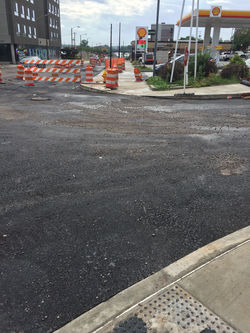 |  |  |  | 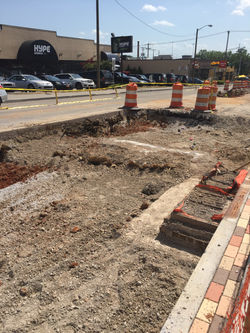 | 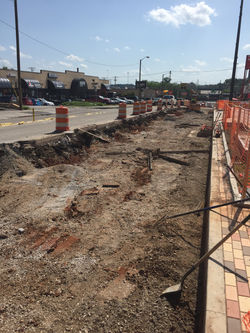 |
|---|---|---|---|---|---|---|
 |  |  | 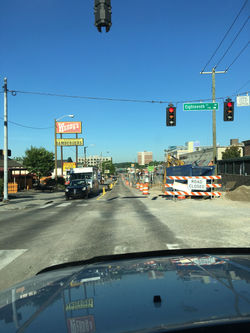 |  | 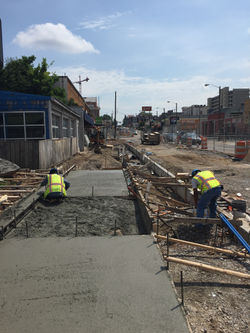 |  |
 |  |  |  |  |  |  |
 |  |  |  |  |  |  |
 |  |  |  |  |  |  |
 |








